Caving in Ontario; Exploring Buried Karst
 At one time the Canadian province of Ontario had been referred to as the “cave desert”, but as it increasingly becomes apparent, there are caves beneath this desert. The Bobcaygeon formation limestone is especially well suited to cave development; it is a fine-grained, ivory-white rock that is sliced in layers by shale. And for its proximity to the granite and pine of the Canadian Shield, caves in this rock are acted upon by especially acidic waters.
At one time the Canadian province of Ontario had been referred to as the “cave desert”, but as it increasingly becomes apparent, there are caves beneath this desert. The Bobcaygeon formation limestone is especially well suited to cave development; it is a fine-grained, ivory-white rock that is sliced in layers by shale. And for its proximity to the granite and pine of the Canadian Shield, caves in this rock are acted upon by especially acidic waters.
Contemporary Ontario is perched upon the sediment of an ancient sea bed. This is a fertile base for cave growth, it is only time that we’ve been lacking. The last ice age, with its final retreat some 14,000 years ago scraped Ontario to the bone. It is said that as much as 100 meters of rock had been removed. With the relatively level strata of the Michigan Basin, caves tend to develop near the surface. It therefore stands to reason that most of the pre-glacial caves have disappeared. What we now have are many smaller tunnel systems that are represented by sinkholes on the surface, and a populous that makes no connection between the surface and the tunnels that are forming down below.
As a caver in Ontario I have come to see the topography in three dimensions. It is not only the surface wrinkles, the valleys and hills, but also the sinkholes and disappearing streams that suggest a cave-pocked surface that is buried beneath the till. As Marcus Buck, a well known local caver had said, “The golden age of caving is soon to be upon us”. I believe that the golden age is here and it could only have arrived with the enlightenment of our thinking. Whereas many had traveled southwards to explore, it is increasingly apparent that those who stay behind – through lack of funds or motivation, are exploring virgin passage. Admittedly there is usually some digging that is needed, but cave hunting in Ontario is only successful with this altered way of thinking (three dimensional).
Over the last few years there have been significant discoveries in the Belleville area, the old standby of Moira Cave is now neighbor to ATR. There are also other discoveries of a similar nature that might lengthen known systems. The Hamilton Region lies atop a karst landscape and though it is somewhat fractured, several systems have recently appeared.
As cavers in the north we are subject to a vast and not always populated area to conduct our explorations. For the harsh conditions, caving in Ontario has tended from half-hearted to very much extreme. Ontario has a lot to offer, it just requires a changed mentality for everyone to see it.
For more information check out the book, ‘Caving in Ontario; Exploring Buried Karst‘, by Michael Gordon; which details the experience of cave exploration in the Ontario.


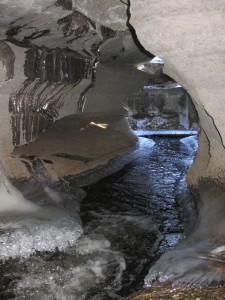
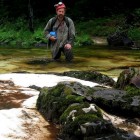
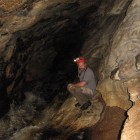
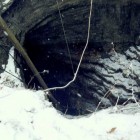
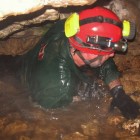

Comments (1)
Fascinating to learn about the unknown karst beneath our feet. I enjoyed your post.
Comment